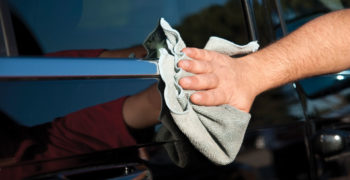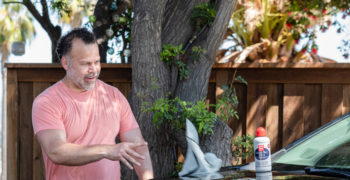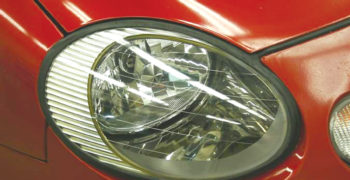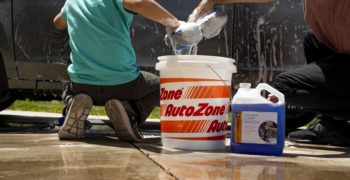Wash & Wax
What looks better than a well-cleaned car? For one, it looks as close to the day you bought it as possible – and – you’ll be protecting your investment by keeping your car’s finish in the best shape possible.
That said, we have some good and bad news about getting your car so clean it shines like glass. The bad news: the machines and bristles at automatic car washes don’t get cars as clean as you’d think, and they also leave swirl marks or scratches in the finish. So what’s the good news? Cleaning your car by hand can help it look its best, and DIY car washing is simple.
If hand washing sounds right to you but you don’t know where to start, you’re in the right place. Scroll down for more info on washing your car and related articles on specific car wash tips and tricks and techniques.
What soap should you wash your car with?
Make sure you use a cleaning agent that was made for use with car finishes. Household soaps such as dish soap are not made for cars and could strip off some of the protective wax. AutoZone has a wide selection of car wash soaps that are made to protect automotive exteriors, and your wax finish.
How Often Should You Wash Your Car?
As a general rule, you should probably wash your car every two weeks or so. But it really depends on where you live. If you live in the snowbelt, washing your car in the winter as much as possible is vital, and although this can be extremely difficult to do DIY when it’s 15 degrees outside, a self-serve carwash can help you quickly get rid of a car’s worst enemy – salt. Cars get dirty faster in some places than in others. For example, if you live in a dusty climate or around trees, you’ll need to wash more often.
How to Wash a Car
First, park your car and make sure that the body is not hot from driving or sitting in direct sunlight. You’ll need to park it out of direct sunlight, as heat speeds up the rate at which soap and water dry, leaving spots or dried soap on the car.
Rinse off the car and remove any standing dirt or mud with your water stream before you break out your soapy sponge or wash brush. Choose a clean, soft washing sponge or washing brush that’s designed specifically for car washing. If you are only using one wash bucket, make sure you thoroughly clean the sponge or brush with hose water before re-dipping into the wash bucket. This avoids you putting dirt and contaminants into the clean wash water.
Once you’ve rinsed any dirt off the body of the car, start washing the panels. Be sure to get all the door gaps and jams, inside the fuel door, and on the edges of the fenders. Any place salt and dirt can settle needs to be addressed. Clean and then rinse the car one body panel at a time to reduce the risk of the water drying and leaving spots. Don’t move the sponge in circles, as this can cause light scratches called swirls. Also, make sure the sponge is constantly clean. Once you make one cleaning pass, wash the sponge or brush off.
How to Dry a Car
Don’t let the car air dry. It’ll leave spots. Some people drive around the block to try to get a faster air dry. Unfortunately, this can also leave spots, like in areas that moving air cannot touch. While a chamois has long been the standard for car drying, they are expensive, are prone to holding dirt and contaminants and need to be cared for properly.
Today, microfiber drying towels, or “waffle towels” are a great choice as they hold a lot of water, and softly dry the car. Plus, you can buy several and keep them in rotation. They launder easily, and you can dedicate one specifically to cleaning and drying wheels, which tend to get the towel dirty and can quickly contaminate a chamois.
A water blade can speed things up too, by quickly whisking away all the standing water, just be sure the car is thoroughly rinsed off so there’s no risk of dragging contaminants. Then follow up with the drying towel. If you want to learn more about keeping your car clean, check out the articles below.











